The Flames of Faith by Pervez Daruwala
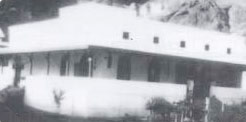
'Lhotse', Air lndia's Boeing 707 began taxiing on the tarmac and as the big aeroplane lost touch with the ground and became airborne, chants of Yatha Ahu Vairyo rent the aircraft. For, this was a very special journey, on a very special mission. Flying on board the chartered plane was a very, very special and important entity - Atash-e-Adaran.
This, then, is the story of a very important and almost miraculous chapter in the history of the Zarathustris. An event which took place in the life time of most of us. Join us as we 'fly' down to the Red Sea port of Aden, situated on the Arabian peninsula. Welcome aboard the 'Lhotse':
Parsees have always been adventurous and enterprising and many have gone to distant shores to seek their fortunes and, wealth and in a number of cases, settled abroad. In a few places they even build Fire Temples to cater to the religious and spiritual needs of the Parsee community settled on these foreign shores. One such Agiary was built at Zanzibar which, unfortunately, had to be closed down when Parsees left that place and the Atash Padsha there just 'died out'. Shanghai in China, too, had a fire temple, which also unfortunately had to be closed down when the communists took over China. Another Agiary in a foreign land was the one at Aden in the country of Yemen.
Aden, in those days, was a thriving trading post, a free port like Singapore. Located at a strategic point on the Arabian peninsula, it was the port ships passed through on their East to West - West to East journeys, via the Suez Canal. Aden had a large number of Parsees - around 1300 - and in the year 1883 they built an aglary there where the consecrated Atash was of Adaren grade. This aglary was built by the Cowasji Dinshaw family who were In the business of shipping. This family also built a mosque for the local Mohamedan population which is known as the Cowasji Masjid and is still in use in Aden. There also used to be a Dokhma in Aden for the use of the Parsees.
In 1967, the British left Yemen and South Yemen turned into a communist country. Aden soon lost its prime position as an important trading post on both sides of the Suez. Business declined and a number of foreigners working there and contributing to its economy started leaving, too. So did the Parsees, many of them who had almost settled there moved back to India or to other places like UK, Canada, etc. Only a few Parsee families were left by the mid-seventies and they, too, were all set to leave.
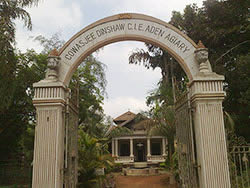
With the advent of communism, the agiary, dokhma and their funds, etc. all became state property. With all the Parsees set to leave Aden, who would take care of the Atash? That's when Cowasjee Dinshaw, the great grandson of Cowaajee Dinshaw who had built the aglary and dokhma in Aden In the last century, decided that he would not let the Holy Atash, which had sustained and nurtured the community in this land away from home, just die away as the one at Zanzibar had. Most of the Parsees in Aden had prospered and done very well for themselves, and they strongly believed it was due to the blessings of the Atash Padsha. The Atash had provided them with spiritual sustenance and was an important focal point of keeping the community united, alive and energetic.
Cowasjee Dinshaw firmly believed that this Atash had miraculous powers. During the fight for ousting the British from Yemen, inspite of all the bombings and destruction all around, the Agiary was never touched even by a splinter, leave alone the various bombs that were exploding all around it. Ultimately, in 1967, the British left Yemen and the communists came to power. Soon, changes began even in the business community and one by one the foreigners started moving out of Aden. Now with the impending withdrawal of the Parsees from this ancient Islamic and new communist state, wnat was to happen to our Holy Fire?
The first decision was that the Atash had to be moved out of Aden. Alternate places where it could be enthroned were considered. The first was in a Daremeher in Iran. When Cowasjee Dinshaw approached the head of tne Zarthusti Anjumans in Iran, they expressed their willingness to receive the Atash. But they had two conditions. One, they would follow the Fasli calendar for all religious ceremonies and, secondly, they would not be able to keep the Varsiaji in the Daremeher. Both these conditions were unacceptable to Mr. Dinshaw. So the next alternative was explored. This was a House of Worship in London. But the London-based Parsees were concerned that since some smoke would emanate from the Fire, it would be difficult for them to enthrone the Holy Fire in London!
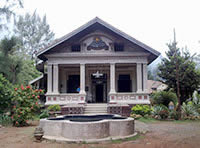
That's when Cowasjee felt that the best place for the Holy Fire to be would be in India where it would be safe, glowing and 'alive'. The next step was to obtain permission from the government of South Yemen to move the Atash out of that country. Being a newly formed communist regime, they were not exactly very understanding of religious sentiments. Cowasjee Dinshaw appealed to the government for permission to move the Holy Atash to India. This was refused. He then appealed to Queen Elizabeth as the head of the Commonwealth, the World Bank as well as the Government of India.
There were no encouraging or helpful responses from Elizabeth or the World Bank. It was the Indian government that really worked hard in this matter. India, in those days was ruled by the late Prime Minister, Mrs. Indira Gandhi and the foreign Minister was Mr. Y.B. Chavan, the strongman from Maharashtra. A petition was sent to the Prime Minister and not surprisingly was favourably received by her. The Prime Minister asked Y. B. Chavan to take all measures possible to persuade the South Yemeni government to release the 'Holy Atash'. This was not as easy as it sounded. The South Yemeni government was not very keen to let the Atash be moved out of Aden, being communists and thus having little sympathy towards religious spiritual sentiments.
It took a lot of persuasion from the Indian Foreign Ministry, Y.B. Chavan and even Mrs. Gandhi personally, to make the South Yemeni government finally agree to let the Parsees move the Holy Atash to India, In a meeting of the Non Aligned Nations held in Colombo, Y.B. Chavan personally met the Head of the South Yemeni government who was also present there and once again pressed the case for the release of the Holy Atash to India. At last, the South Yemeni Government agreed and, indeed, it was a moment of joy and relief for the Parsees of Aden, The condition was that it would have to be moved out at midnight. This was agreed to by Mr. Dinshaw. But much more of trials and tribulations had to be passed through almost like a test through fire itself. Further permission had to be taken that the Holy Atash would not be viewed by any non-Zarthustis which, too, was granted very reluctantly by the then South Yemeni government, after a lot of persuasion on the part of our Foreign Ministry.
No sooner was this news known, then a fresh controversy broke out in the community, back home in India. There was a lot of debate on how the Holy Atash could be transported. Cowasjee Dinshaw approached Field Marshall Sam Manecksha to chalk out the best land route to transport the Holy Fire. Manecksha drew up a route, but that meant passing through Mecca and Medina, holiest cities of Islam. Now, this would not have been possible since no non-Muslims are allowed to even enter these two cities.
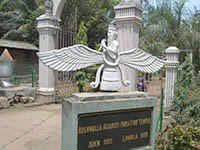
Also, from the Zarthusti theological and religious point of view, transport through land routes was ruled out as there is an injunction in the Denkard on carrying the Holy Fire over wide expanse of waters, and since one would have to cross a number of rivers, this would create a major difficulty. Also, from the practical point of view, even on a different route drawn up by Manecksha, this was not a very good idea. One, it would have involved taking permission from a number of different countries (all Islamic states) to move the Atash through their land. Even the best route would have taken at least two thousand kilometers be covered. How was the Atash to be tended to five imes a day, every day on a journey that would have taken months to complete by road? Also, how safe would our Holy Atash be from the prying eyes of curious, suspicious and even hostile locals? Plus, the logistics of the whole exercise would have been too cumbersome to carry out. One would need a set of very hardy Parsi-Zarthusti drivers and mechanics to drive and maintain the vehicle. Again, the route would be over very rough and dry terrain, most of it desert. All this seemed like a very improbable venture to carry out. Thus, moving over a land route had to be ruled out.
For the same reason (injunction in the Denkard), the sea route was discounted. Moving by sea would have involved carrying the Holy Fire on a ship and travelling from Aden to Bombay. But on this point the eiders, scholars and those learned in our scriptural matters expressed their strong disapproval. From the Zarathusti point of view, according to them the Holy Fire is not to be carried over the waters. This is because the sea unfortunately contains within its waters a lot of pollutants, like discharge from the ships and freighters. Transporting the Holy Fire over such impurities would be nothing short of sacrilege, amounting to defiling the Atash Padsha.
So, what other avenue was left but to fly the Holy Fire over to India. Have you heard Of carrying fire in an aircraft? From the point of security that was a highly dangerous thing to do. It could result in the loss of not only the aircraft but also the people escorting the fire. Yet as the concerned people thought about and debated on these issues, the more it became clear that this was the only way to transport the Atash. Thus the decision was taken to fly it to Bombay.
Thus Air India was contacted. Air India agreed to provide an aircraft on a charter basis. This was a Boeing 707. Air India by then had begun inducting 747s, the giant Jumbos into its fleet.
Now even an airline started by a Parsee does not routinely fly Fire - that, too, consecrated and of the Adaran grade. To transport this very special 'passenger' it was essential that purity and some religious injunctions be observed. One of the first one amongst these was that only Parsee Zarthustis be on board the aircraft. Thus Air India began the exercise of identifying only Parsi crew who would escort the Holy Fire. Capt. Sam Pedder was contacted and nominated for this religious adventure. For this, he was required to fly a few 707s of Indian Airlines to clock-in some more hours for flying a Boeing 707 as he had by now graduated onto the 747 Jumbo Jets, giants of the skies.
The Engineering department of Air India, under the supervision of their then Deputy Director of Engineering, Mr. N.S. Mistry, prepared a special urn to carry the Holy Fire in. They also made a big box which would hold the urn. These were made of aluminium and other metals.
The configuration of the First Class section in the special Aircraft - Lhotse - had to be changed to accommodate the box containing the urn which would be carrying the fire.
Soon it was time for the Holy Fire to leave the shores of Aden where it had provided its light and protection, its blessings and goodwill to the faithful.
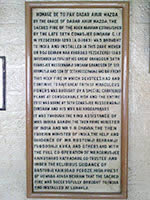
Just on the eve of the departure an unexpected problem arose. The police commissioner of Aden, who was a Muslim-turned communist, informed the remaining few Parsees who were looking after the Fire that he would be coming over the next day to personally inspect the Fire and the urn and the box that would be carrying it. No amount of entreaties that the Holy Fire could not be subjected to the gaze of a non-Zarthusti seemed to have any effect on him. The fact that permission was obtained that the Fire would not be viewed by any non-Zarthusti did not cut much ice with this person, who insisted on his demand on the grounds that the big box could be used for purposes of smuggling!
He announced that he would be there when the Fire was being moved out and the Fire be kept ready for his inspection or else he would not give any permission to move it out of the agiary premises. Imagine the state of mind of the four-five Parsees left behind. Here they were trying their best to protect the Fire to ensure its survival and journey to India and here was a thunderbolt from a man who seemed unsympathetic and stubborn. Would the sanctity of the Atash be preserved after it was 'inspected' by a non-Zarthusti? After all, there are esoteric reasons why this is forbidden.
The Parsees prayed to Ahura Mazda, to the Prophet Zarathustra. They prayed to the Holy Fire itself and asked to be delivered from this impending catastrophe. At midnight there was a knock on the door of the agiary. The Parsees looked at each other with dismay and anguish. So the commissioner had come to defile our cherished Atash Padsha, they cried.
The door was opened with a heavy heart. Out on the steps stood a person and he had brought some news. The commissioner had just died, most unexpectedly! The Holy Atash was now safe from the eyes of those who need not gaze at it.
Soon afterwards, in a convoy the Atash was taken to the airport. The aircraft had just arrived from Bombay and the engines were not even switched off. No non-Zarthusti touched the aircraft. The aircraft had been sanctified with well-water and taro. Cowasjee Dinshaw was aboard the same with the Head Priest of Udwada, Dastoorjee Kekobad Phirozjee, who had provided a lot of religious advice on the whole exercise and, of course, his moral support. There were five other priests on board, too. As soon as 'Lhotse' landed, two mobeds holding British citizenship rushed to the Agiary. By then Dasturjee Minocher Manecksha who had tended the Fire for many years at the Aden Agiary had offered Boi to the Fire in the Ushahin Geh, for the last time in Aden. From there the Atash was brought in its new container in a convoy to the airport. A pavi was built to ensure the sanctity of the Atash Padsha. The Yemeni government had provided motorcycle escort to the entourage. The Holy Fire was carried onto the aircraft. In a few minutes the aircraft, the engines of which were never switched off even after its long journey from Bombay, was taxiing and was soon airborne. History was made as live fire was carried in an aircraft which otherwise was a very dangerous thing to do. As the aircraft took off, the Yemeni officials gave it a 21-gun salute, the sounds of which were heard all over Aden. This truly signified an end of an era for Aden, The all-Parsee crew as well as the other Parsee escorts kept on chanting our prayers.
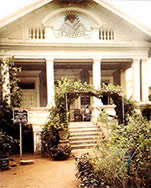
The mobeds who were accompanying the Holy Fire did the Padyab Kushti, Atash Niyaesh and other prayers. They often opened the box to offer sandalwood to ensure that the fire was still glowing and had not died out. They did this with regard to all due ceremonies and by reciting the necessary prayers. Opening the container and feeding sandalwood to the fire at the height of 30,000 feet was, indeed, a very dangerous thing to do, as any flames escaping out could lead to a major explosion in mid-air due to the highly pressurized cabin conditions. Yet, every time, they opened the box to look at the Fire, they found it resting quietly, just glowing softly and serenely, the flames dancing gently, almost as if enjoying the unique journey.
After flying for almost four hours, the aircraft landed at the Santa Cruz airport, Bombay, at around 7.00 a.m. The airport was chock-a block with Parsees who had come to receive their Holy Atash from across the seas. With due respects, the box was slowly taken down the steps. A pavi was built around the container and Yatha Ahu Vairyo was chanted, ceremoniously. Dasturjee touched the ground of Mother Earth in thanksgiving for a safe journey and with a prayer on his lips opened the box. Lo and behold, the Fire that was resting silently by just glowing softly while in midair, now leaped a few feet, as if in sheer ecstasy. The Flames of Faith danced and swirled as they came in touch with the atmosphere of Mother India - the land that has been home to its devotees (the Zarathustris and the Hindus) since centuries. Here, in the land that has been home to the largest number of the world's great religions, the Holy Atash Padsha from Aden at last felt at home - secure and safe.
The Atash Padsha was now taken to the Soonawalla Agiary at Mahim in a special luxury bus for being 'rested' for the new hours. This was taken under police escort. The Atash was offered Machi and Boi for the Havan Geh, and later in the Rapithwan geh, too. The Mahim agiary was packed with hundreds of ordinary Parsee-Zarthustis who had come to pay their respects to the Atash Padsha. Around 01.30 at noon, once again the Holy Fire was taken on board the special bus and this time the second Phase of this historical Journey commenced... to the Adenwala Aglary at Lonavala in the hills of the Western ghats. This is where the Atash would be enthroned.
A pavi had been created around the bus and a chain attached to it to maintain contact always with the earth. In an absolutely unprecedented move, the Bombay to Pune highway, one of the busiest land routes in the country on which Lonavala is situated, was closed to all traffic upto Lonavala from Bombay. A motorcycle escort was once again provided by the government of Maharashtra to the convoy. A number of Parsees followed the same in eight buses plus many went along in their own cars and vehicles (around 60-70 automobiles) and the route was lined with cheering Parsees, praying and expressing their gratitude to the Lord for the safe passage of the Holy Fire.
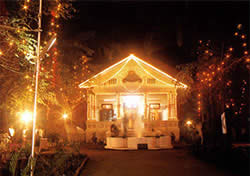
On 14th November, 1976, Roj Behram, Mah Khordad, YZ 1346, the Atash Padsha which was first consecrated in Aden in the year 1883 in the Adenwalla Agiary at Aden in Yemen, arrived at its new home, the Adenwalla Agiary at Lonawala, India.
With due ceremonies and prayers (Machi and Boi ceremonies in the Ujiren Geh) the Atash Padsha was installed in the specially created sanctum sanctorum next to that of the original Atash Padsha of the Lonavala agiary (which is of the Dadgah grade). A jashan for thanksgiving was later conducted in the evening. Once again, the agiary was full Of devotees and the atmosphere was one of great joy and devotion.
The costs and expenses which ran into lakhs of rupees for the complete operation were borne by Mr. Cowasjee Dinshaw and his wife, personally. When this writer enquired with him what was the sum spent he very modestly declined to mention the figure. Such humility and modesty is so rare and thus praiseworthy especially in the times we live in today.
Today, both the Atash Padshas blaze forth in joyous glory. The Atash from Aden stands testimony to those brave souls who consecrated the Fire in a foreign land and had the foresight and courage to bring it to safety when times became difficult. The radiant flames of this Atash bear testimony to the miracles that the Lord keeps creating, strengthening the faith of the faithful and reinforcing the message of hope, courage, devotion, faith and perseverance.
There are some more messages in this story and one of these is that after the flight of the Zarthustis from Iran to India, India has been the only place where we, the Parsi-Zarathustis have been able to build and sustain our holy Fire Temples without any fear of these being destroyed, desecrated or defiled. Even in the much touted democracies of the West, we may not be able to build fire temples where only zarathustis are permitted entry. No matter whatever disadvantages and inconveniences one may face here in terms of systems, infrastructure, etc. (and these are felt by people of all races and religions here) we have lived here freely and prospered, too. Our places of worship are not in danger of being destroyed or closed down. Indeed, we need to think as to why our ancestors were guided (divine guidance, I firmly believe) to come to India when they were seeking refuge and not go elsewhere.
Indeed, if there is talk of closing agiaries today, it is unfortunately within the community itself and stems from tragic issues like not having sufficient number of priests to tend to the holy fires in remote places like small villages and towns. But hold it just a moment here. The Adenwalla Agiary at Lonavala where the Atash of this story resides today is tended by just one priest, day in and day out. Dasturjee Marzban Gonda has to be heard reciting our prayers at this Fire temple to understand the devotion and love that Atash can inspire.
Also, it we use our minds and resources, the Lord will provide support and guidance. If a few determined individuals could fly down the Holy Atash under very trying circumstances, facing various odds, surely we, too, can look at the possibility of keeping the fires glowing in all our aglaries and daremehers.
The story of bringing over the Holy Atash from Aden to Lonavala is a true story, little known and heard but it has many lessons for us all. It all happened just twenty-two years ago! It is part of our history. The Iranians of old were not known for recording their history. This is, therefore, just a small and humble attempt to do so, so that this story of devotion and courage is not forgotten and also so that we keep learning from history and not become victims of being ignorant of our past.
May the various Atash Padshas in various Fire temples continue to blaze and glow with love and joy, power and radiance, showering their blessings not only on our numerically tiny community, but also on this land of Bharat which has protected and sustained us, socially, materially and spiritually.
Sauche buye ahmi nmane... dareghemchit aipi zravanem
(May Thou (Holy Fire) blaze till eternity).
Article by Pervez Daruwala
Jam-e-Jamshed Weekly, Parsi New Year Special
Sunday, 16th August, 1998.
